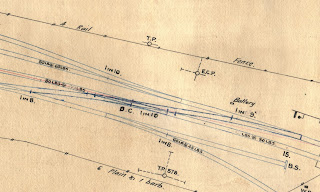Rail size Weight (lbs) Per Yard | Height in Inches (HT) | Height in Millimeters (HT) | S Scale in Thou’s (HT) | Nearest Code Equivalent | Manufacturers (I’m Sure There’s Plenty More) |
45 | 3 11/16 | 94 | .057 | 55 | Micro-Engineering |
58 | 4 7/16 | 113 | .069 | 70 | Micro-Engineering |
63 | 4 5/8 | 117 | .072 | 70 OR 75 | Micro-Engineering Peco |
82 | 5 3/8 | 136 | .084 | 83 | Micro-Engineering Peco |
During a recent visit to the Railway Museum at Bassendean, one of the tasks that I set myself was to find and measure the height of various weights of rails on site so I could find their equivalents in S Scale when I returned home.
Why.? Because when fellow modellers would discuss codes in rail sizes, I had no idea of what they were talking about, so it was an exercise in understanding what rail to codes was all about.
I am not claiming that the above table is 100% accurate as wear has an impact on the height but I did try and find several examples of each weight of rail to get the best readings.
The modeller will need to research the station or line in which it is to be modelled to determine rail codes to use, the State Records Office and Rail Heritage WA have large collections of track diagrams which clearly show the weight of rails used within station yard layouts.
Thanks to Richard Stallard in giving guidance in this piece. Richard had previously wrote an article in ASNM regarding the same subject but in greater detail (unknown to me when I started my research).
RC


The data on the SSMRS website was put together by me a few years ago which is why there are some Australian standard sections included amongst the others. If you have fullsets of data for WA sections (i.e. including the head and foot width data) I would like to add then to the list. Somewhere I also have a list of other manufacturers model rail as well.
ReplyDelete